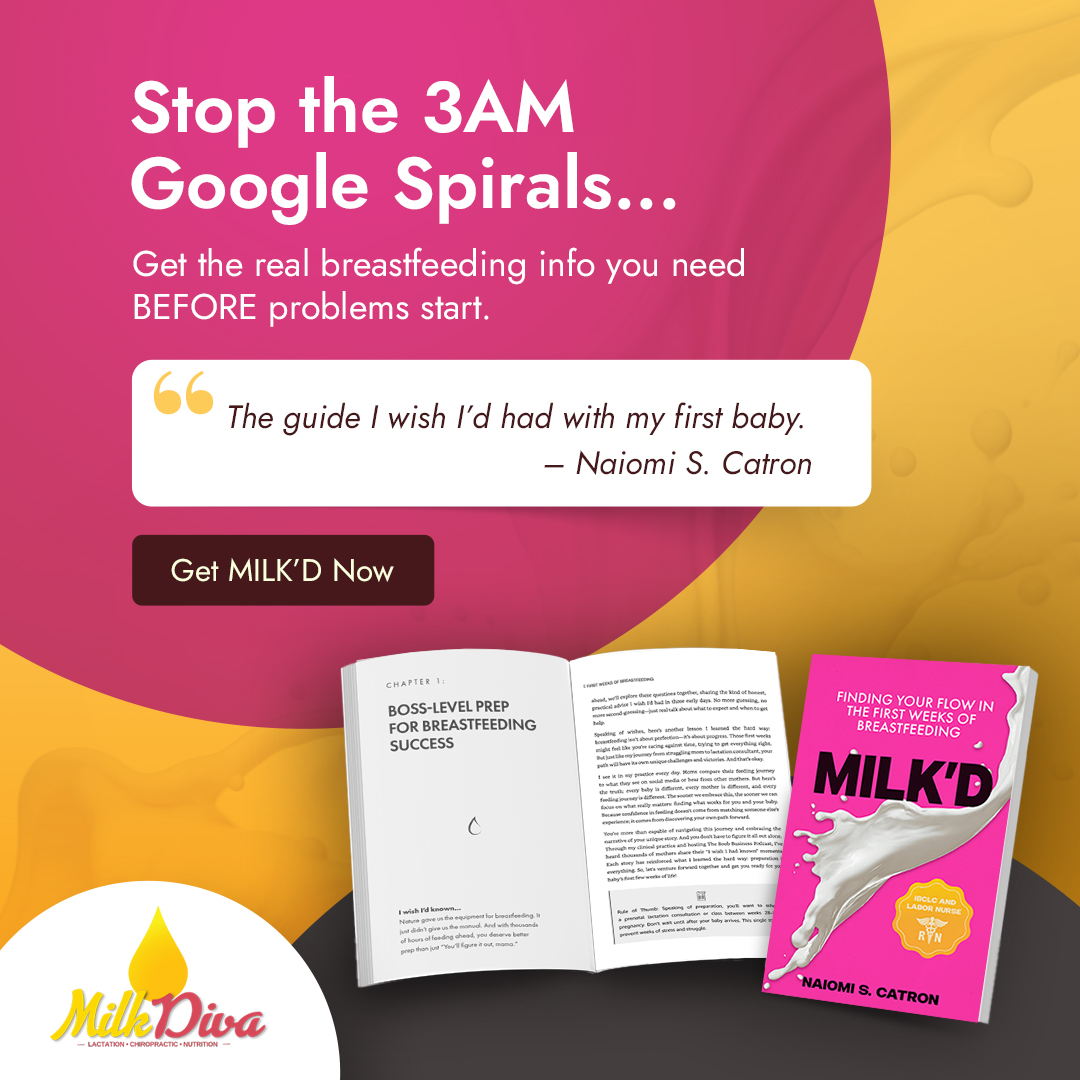Episode 49: Nipple Pain & Milk Supply Truth Bombs: What Every Breastfeeding Parent Needs to Know
Episode 49 – The Boob Business Podcast by Milk Diva
Breastfeeding challenges? You’re not alone. In this episode of The Boob Business Podcast, we’re pulling back the curtain on two of the most common concerns new parents face—nipple pain and milk supply confusion—and delivering the truth bombs every parent needs to hear.
Let’s Talk About Nipple Pain
Here’s the truth: nipple pain is not normal.
If you’re wincing every time your baby latches or pumping makes you want to cry, something is off. And no, it’s not something you have to just "push through." Your nipples are not meant to be raw, cracked, or bleeding. They’re delicate skin on a highly vascular part of your body—meaning they can (and should) heal quickly if given the right care.
But slapping on a silver nipple cover or “triple nipple ointment” without addressing the root cause? That’s just a Band-Aid—and often, it makes things worse.
Here’s why:
Silver covers can trap moisture, sugar (from breastmilk), and heat—creating the perfect breeding ground for yeast, bacteria, and mold.
Improper flange sizing and aggressive pump settings can create trauma and lead to maceration (read: raw, soggy skin that's prone to breakdown).
Poor latch technique or undiagnosed oral dysfunction in baby (like a tongue tie) can cause ongoing injury.
💡 Takeaway: If your nipples haven’t improved within 24–48 hours of rest and wound care, it’s time to bring in a lactation pro. Don’t Google-diagnose. You deserve better.
🍼 The Milk Supply Myth: More Is Not Always Better
Let’s bust a big one: Oversupply is NOT the goal.
We often see parents striving to “stock the freezer,” but producing 128 ounces of milk per day isn’t just unnecessary—it’s exhausting and potentially harmful.
What oversupply can cause:
Recurrent plugged ducts and mastitis
A gassy, reflux-prone baby
Breast pain and discomfort
Wasted milk (especially if it’s high lipase and baby won’t drink it)
Instead of chasing oversupply, aim for a full and sustainable supply—typically 25–30 oz per 24 hours for a full-term, exclusively breastfed baby.
🥛 Bonus Tip: You don’t need a month’s worth of milk before returning to work. Just one day’s supply (plus your daily pumping) is plenty!
🔌 Pumping Truth Bombs
There are SO many pumps on the market promising magic—but many are hurting more than helping.
Key advice from the episode:
Hands-free pumps aren’t ideal in the first few weeks postpartum—they’re best used after your supply is well-established.
Your primary pump should be a high-quality, plug-in, double-electric pump.
Flange fit matters. Areola shouldn't be sucked into the tunnel. Just the nipple should glide in and out gently.
🎧 Want a visual? Check out Episode 49 for a deep dive into flange fitting.
⏰ Early Postpartum Strategy: Milk Supply Starts on Day One
If you're still pregnant, this part is for you.
To give your supply the best possible start:
Remove colostrum within the first hour of birth (via nursing or hand expression).
Aim for 8–10 sessions per 24 hours in the first 3–5 days.
Learn hand expression early—it’s a lifesaver if baby is sleepy or separated.
And if you experienced preeclampsia, a long labor, retained placenta, or your baby was born early, your body might need extra support to ramp up.
💥 Stop Triple Feeding if It’s Not Working
Triple feeding (nursing → bottle → pumping) is a common short-term plan—but if you’re doing this beyond a week or two with no improvement in supply, it’s time to pivot. Your time, sanity, and sleep matter.
🧠 Final Thoughts
There’s no one-size-fits-all breastfeeding plan. Your baby, your body, and your circumstances are unique—and deserve personalized, compassionate care.
📘 For more expert tips and real-world guidance, check out my book:
👉 Milk'D: Finding Your Flow in the First Weeks of Breastfeeding
Watch or listen to the full podcast episode now:
Ep 49 – Nipple Pain & Supply Truth Bombs
→ Click here to listen or watch on YouTube






